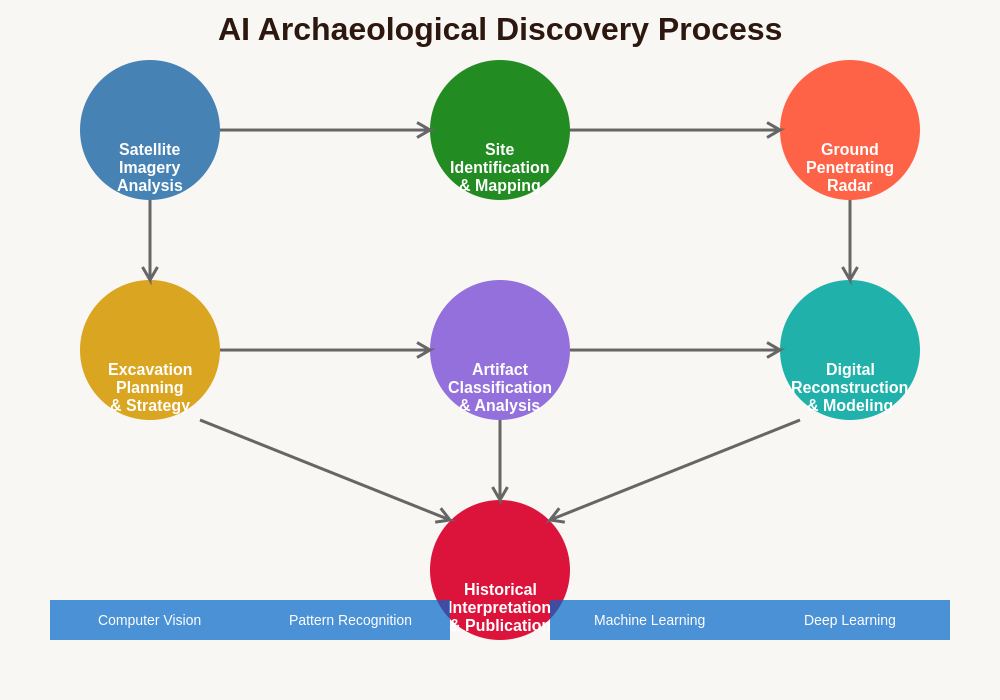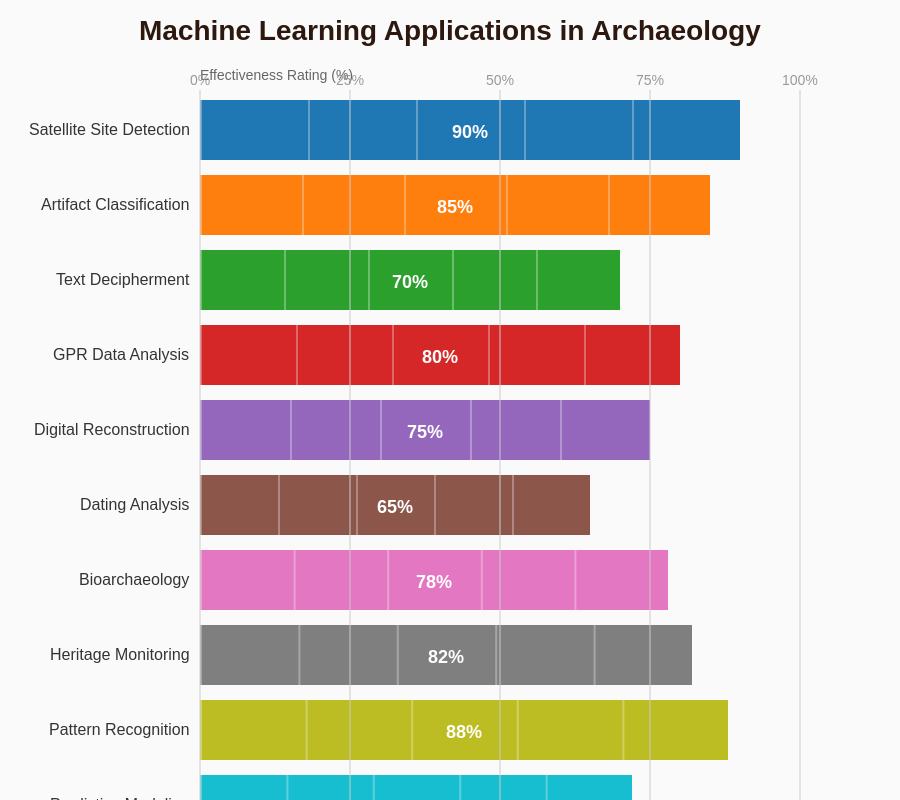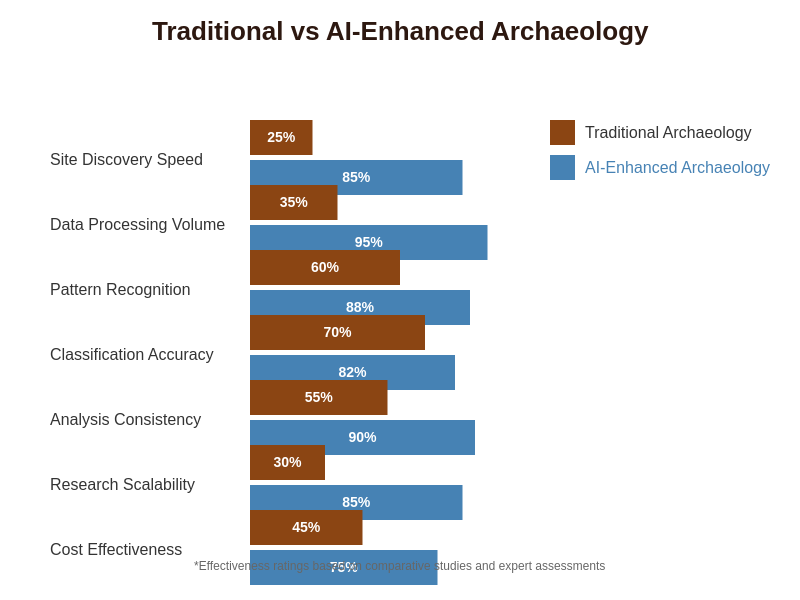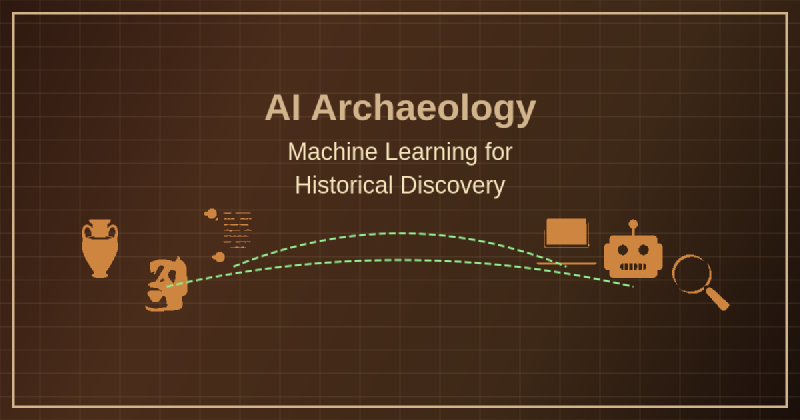The intersection of artificial intelligence and archaeology represents one of the most fascinating applications of modern technology to ancient mysteries, creating unprecedented opportunities for historical discovery and cultural preservation. Machine learning algorithms are now capable of analyzing vast datasets of archaeological information, identifying patterns invisible to the human eye, and accelerating the pace of discovery in ways that would have been unimaginable just decades ago. This technological revolution is not merely augmenting traditional archaeological methods but fundamentally transforming how researchers approach the study of human history and cultural heritage.
Explore the latest AI trends in archaeological applications to understand how cutting-edge technologies are being deployed across diverse historical research projects worldwide. The convergence of artificial intelligence with archaeological science has opened new frontiers in understanding ancient civilizations, revealing hidden structures, deciphering lost languages, and preserving cultural heritage for future generations through digital reconstruction and analysis.
The Digital Revolution in Archaeological Science
The traditional archaeological approach relied heavily on manual excavation, visual analysis, and human interpretation of artifacts and structures. While these methods remain essential, the integration of artificial intelligence has exponentially increased the scope and accuracy of archaeological research. Machine learning algorithms can now process satellite imagery to identify potential archaeological sites, analyze ground-penetrating radar data to reveal buried structures, and classify thousands of artifacts with remarkable precision and speed.
This digital transformation has enabled archaeologists to work with unprecedented scales of data, from analyzing entire landscapes for settlement patterns to examining microscopic details of ancient materials. The ability of AI systems to recognize patterns across multiple data types and scales has revealed connections and insights that would have taken human researchers decades to uncover through traditional methods. The democratization of these advanced analytical tools has also made sophisticated archaeological research accessible to institutions and researchers who previously lacked the resources for extensive fieldwork or specialized equipment.
Satellite Imagery Analysis and Site Discovery
One of the most revolutionary applications of machine learning in archaeology involves the analysis of satellite and aerial imagery for site discovery and landscape archaeology. Advanced computer vision algorithms can now identify subtle variations in vegetation, soil composition, and topography that indicate the presence of buried archaeological features. These systems have successfully detected ancient roads, settlements, agricultural systems, and monumental structures across diverse geographical regions and environmental conditions.
The scalability of satellite-based archaeological prospection has enabled researchers to survey vast areas that would be impossible to investigate through traditional ground-based methods. Machine learning models trained on known archaeological sites can now scan entire regions, identifying potential locations for future excavation and research. This approach has led to the discovery of previously unknown Maya settlements in Guatemala, Roman military camps across Europe, and ancient irrigation systems in desert regions, fundamentally expanding our understanding of past human societies and their environmental adaptations.
Experience advanced AI capabilities with Claude for complex data analysis and pattern recognition tasks that can support archaeological research and historical investigation projects. The integration of multiple AI technologies creates powerful analytical frameworks that can process diverse types of archaeological data simultaneously, from satellite imagery to artifact databases and historical documents.
Artifact Classification and Cultural Heritage Preservation
The classification and analysis of archaeological artifacts represent fundamental challenges in the field, often requiring extensive expertise in material culture, artistic traditions, and manufacturing techniques. Machine learning algorithms have proven exceptionally capable of addressing these challenges by learning to recognize complex visual patterns, stylistic characteristics, and technical features that define different artifact types and cultural traditions. Deep learning models can now classify pottery sherds, stone tools, coins, and decorative objects with accuracy rates that often exceed human specialists, particularly when dealing with large collections of similar artifacts.
Beyond basic classification, AI systems are being developed to analyze the provenance of artifacts, identify forgeries, and reconstruct damaged or fragmentary pieces through digital restoration techniques. Computer vision algorithms can match fragments of pottery vessels, identify tool-making techniques from stone artifacts, and even predict the original appearance of deteriorated paintings and sculptures. These capabilities are particularly valuable for museums and cultural heritage institutions that need to catalog and preserve vast collections while making them accessible to researchers and the public through digital platforms.
Ancient Text Decipherment and Linguistic Analysis
The decipherment of ancient scripts and languages represents one of the most intellectually challenging aspects of archaeological research, often requiring decades of scholarly effort to make meaningful progress. Machine learning approaches to ancient text analysis have shown remarkable promise in accelerating this process by identifying patterns in undeciphered scripts, suggesting possible linguistic relationships, and proposing potential readings for unknown texts. Natural language processing techniques adapted for historical linguistics can now analyze the statistical properties of ancient writing systems and compare them with known languages and scripts.
Recent successes in AI-assisted decipherment include progress on Linear A, the undeciphered Minoan script, and various cuneiform texts from Mesopotamia. Machine learning models can identify recurring symbols, analyze their contextual usage, and suggest possible phonetic or semantic values based on comparisons with related writing systems. These computational approaches complement traditional philological methods by processing far larger corpora of texts and identifying subtle patterns that might escape human attention, potentially leading to breakthroughs in understanding ancient languages and cultures.

The systematic application of artificial intelligence to archaeological discovery follows a comprehensive workflow that integrates multiple technologies and methodologies. This process demonstrates how machine learning enhances each stage of archaeological investigation, from initial site identification through detailed analysis and interpretation of findings.
Ground-Penetrating Radar and Subsurface Detection
Ground-penetrating radar technology combined with machine learning algorithms has revolutionized the detection and mapping of subsurface archaeological features without the need for invasive excavation. AI systems trained on radar data can now distinguish between natural geological features and human-made structures, identify different types of buried remains, and create detailed three-dimensional maps of archaeological sites before excavation begins. This non-destructive approach to site investigation has proven particularly valuable for sensitive historical locations where excavation might damage important cultural resources.
The ability of machine learning algorithms to process and interpret complex radar signatures has enabled archaeologists to plan excavations more strategically, focusing their limited resources on areas most likely to contain significant archaeological deposits. These systems can identify buried walls, floors, graves, storage pits, and other features that provide insights into past human activities and settlement patterns. The integration of multiple geophysical survey techniques with AI analysis has created comprehensive subsurface imaging capabilities that guide archaeological research with unprecedented precision and efficiency.
Digital Reconstruction and Virtual Archaeology
The application of artificial intelligence to digital reconstruction and virtual archaeology has opened new possibilities for understanding and experiencing ancient environments and structures. Machine learning algorithms can analyze fragmentary architectural remains and propose reconstructions based on comparable structures from the same period and cultural tradition. These AI-assisted reconstructions go beyond simple visualization to incorporate archaeological evidence, historical documentation, and architectural principles to create scientifically informed models of past environments.
Virtual archaeology platforms powered by machine learning can simulate ancient landscapes, reconstruct damaged monuments, and create immersive experiences that allow researchers and the public to explore historical sites as they might have appeared in antiquity. These digital reconstructions serve multiple purposes, from supporting research and education to preserving cultural heritage sites threatened by environmental degradation, conflict, or development. The ability to create accurate virtual representations of archaeological sites also enables collaborative research across international boundaries and provides access to cultural heritage for communities who may be geographically separated from their ancestral sites.
Enhance your research capabilities with Perplexity for comprehensive information gathering and analysis that supports interdisciplinary archaeological research projects. The combination of AI-powered research tools creates a powerful ecosystem for investigating complex historical questions that require integration of multiple types of evidence and expertise.
Bioarchaeological Analysis and Ancient DNA
The field of bioarchaeology has been transformed by machine learning applications that can analyze ancient biological remains to reconstruct past human populations, migration patterns, and cultural practices. AI algorithms can process ancient DNA sequences to identify genetic relationships between populations, trace migration routes, and understand the evolution of human societies over time. These computational approaches to bioarchaeological data have revealed previously unknown connections between ancient populations and provided insights into the spread of agriculture, technology, and cultural innovations.
Machine learning techniques are also being applied to the analysis of skeletal remains, identifying patterns of health, nutrition, and lifestyle that characterize different archaeological populations. AI systems can analyze bone morphology to determine age, sex, ancestry, and evidence of disease or trauma, providing detailed demographic and health profiles of ancient communities. The ability to process large datasets of bioarchaeological information has enabled researchers to identify broader patterns of human adaptation, cultural change, and population dynamics that extend across multiple sites and time periods.
Chronological Analysis and Dating Techniques
The development of accurate chronological frameworks represents a fundamental challenge in archaeological research, requiring the integration of multiple dating techniques and statistical methods to establish reliable timelines for past events. Machine learning algorithms are now being applied to improve the accuracy and precision of archaeological dating by analyzing patterns in radiocarbon dates, ceramic typologies, and stratigraphic sequences. These AI systems can identify inconsistencies in dating evidence, suggest revised chronological interpretations, and integrate multiple lines of evidence to create more robust temporal frameworks.
Bayesian statistical modeling enhanced by machine learning techniques has proven particularly valuable for archaeological chronology, enabling researchers to incorporate prior knowledge about site formation processes, cultural sequences, and dating uncertainties into their temporal models. These sophisticated analytical approaches can resolve complex chronological problems and provide more precise estimates of when particular events or cultural changes occurred in the archaeological record.

The diverse applications of machine learning in archaeological research demonstrate the versatility and power of AI technologies for addressing different types of research questions. From site discovery and artifact analysis to text decipherment and bioarchaeological studies, machine learning is transforming every aspect of archaeological practice and enabling new forms of historical investigation.
Cultural Heritage Management and Site Protection
The protection and management of archaeological sites and cultural heritage resources have been significantly enhanced through the application of machine learning technologies for monitoring, threat assessment, and conservation planning. AI systems can analyze satellite imagery to detect unauthorized construction, looting activities, or environmental changes that threaten archaeological sites. These monitoring capabilities are particularly important for protecting cultural heritage in regions affected by conflict, rapid development, or climate change, where traditional site management approaches may be insufficient or impossible to implement.
Machine learning algorithms can also assist in prioritizing conservation efforts by analyzing the condition of multiple sites, assessing threat levels, and recommending intervention strategies based on site significance, vulnerability, and available resources. These decision-support systems help cultural heritage managers allocate limited resources more effectively and develop proactive conservation strategies that address the most pressing threats to archaeological sites and historical monuments.
Experimental Archaeology and Behavioral Modeling
The integration of machine learning with experimental archaeology has created new opportunities for understanding ancient technologies, behaviors, and cultural practices through computational modeling and simulation. AI algorithms can analyze the results of experimental studies to identify optimal strategies for tool manufacture, resource processing, and other technological activities, providing insights into the decision-making processes and behavioral adaptations of past human populations.
These computational approaches to experimental archaeology can test multiple hypotheses simultaneously, explore parameter spaces that would be impossible to investigate through physical experiments alone, and identify emergent properties of complex cultural systems. Machine learning models trained on experimental data can predict the outcomes of different technological choices, environmental conditions, or social organizations, supporting interpretations of archaeological evidence and generating testable hypotheses about past human behavior.
Interdisciplinary Collaboration and Data Integration
The application of machine learning to archaeological research has necessitated unprecedented levels of interdisciplinary collaboration, bringing together archaeologists, computer scientists, statisticians, and specialists from multiple other fields to address complex research questions. These collaborative approaches have resulted in the development of new analytical methods, theoretical frameworks, and technological tools that benefit both archaeological research and other disciplines dealing with complex historical and cultural data.
The integration of diverse types of archaeological data through machine learning platforms has created opportunities for synthetic analyses that would have been impossible using traditional analytical methods. AI systems can now process and integrate information from excavations, surveys, laboratory analyses, historical documents, and ethnographic studies to create comprehensive models of past human societies and cultural processes. This holistic approach to archaeological data analysis has revealed new insights into the complexity and diversity of human cultural adaptations throughout history.
Challenges and Ethical Considerations
The implementation of machine learning technologies in archaeological research raises important questions about data ownership, cultural sensitivity, and the representation of indigenous and marginalized communities in digital heritage projects. Archaeological data often relates to the cultural heritage of specific communities, and the application of AI technologies must be conducted in ways that respect indigenous rights, community interests, and traditional knowledge systems. The development of ethical frameworks for AI in archaeology requires ongoing dialogue between researchers, communities, and stakeholders to ensure that technological innovations serve the broader goals of cultural understanding and heritage preservation.
The accuracy and reliability of machine learning systems in archaeological applications also present significant challenges that require careful validation and interpretation. AI algorithms can perpetuate biases present in training data, make incorrect classifications, or identify patterns that do not reflect actual archaeological phenomena. The integration of machine learning results with traditional archaeological expertise requires critical evaluation, independent verification, and ongoing refinement of computational methods to ensure that AI technologies enhance rather than replace human judgment and interpretation.

The transformation of archaeological practice through artificial intelligence demonstrates significant improvements in efficiency, accuracy, and scope of investigation compared to traditional methods. These quantitative improvements in archaeological capabilities enable researchers to address larger questions about human history and cultural development while maintaining rigorous scientific standards.
Future Directions and Technological Innovation
The future development of AI technologies for archaeological applications promises even more sophisticated capabilities for historical discovery and cultural heritage research. Advances in computer vision, natural language processing, and robotics are likely to create new possibilities for automated excavation, real-time artifact analysis, and immersive virtual reality experiences that bring ancient worlds to life with unprecedented detail and accuracy. The integration of Internet of Things sensors, drone technology, and mobile computing platforms will enable continuous monitoring and analysis of archaeological sites and cultural heritage resources.
The development of more sophisticated machine learning models will likely improve the accuracy of site prediction, artifact classification, and historical interpretation while reducing the time and resources required for archaeological research. These technological advances will democratize access to advanced analytical tools and enable smaller research institutions and community organizations to participate in cutting-edge archaeological research. The continued evolution of AI technologies for archaeology will require ongoing investment in research, education, and infrastructure to ensure that these powerful tools are used effectively and ethically to advance our understanding of human history and cultural heritage.
The convergence of artificial intelligence with archaeological science represents a fundamental transformation in how we study and understand the human past. As these technologies continue to evolve, they will undoubtedly reveal new insights into ancient civilizations, preserve cultural heritage for future generations, and inspire continued exploration of humanity’s rich and diverse historical legacy. The future of archaeology lies not in choosing between traditional methods and technological innovation, but in thoughtfully integrating both approaches to create more comprehensive, accurate, and accessible understanding of our shared human heritage.
Disclaimer
This article is for informational purposes only and does not constitute professional advice. The views expressed are based on current understanding of AI technologies and their applications in archaeological research. Readers should conduct their own research and consult with qualified professionals when implementing AI technologies in archaeological or heritage projects. The effectiveness and accuracy of AI applications may vary depending on specific research contexts, data quality, and implementation approaches.
